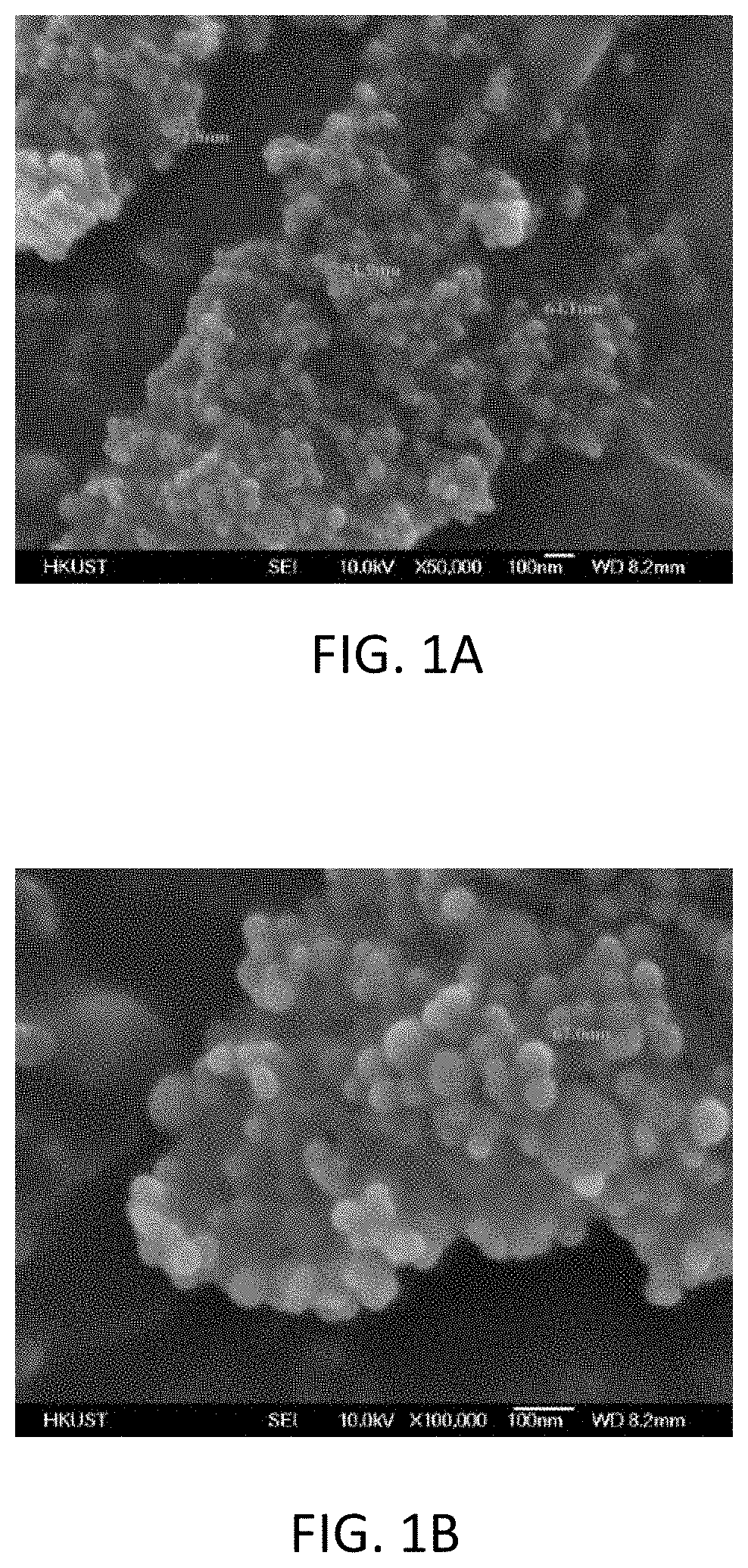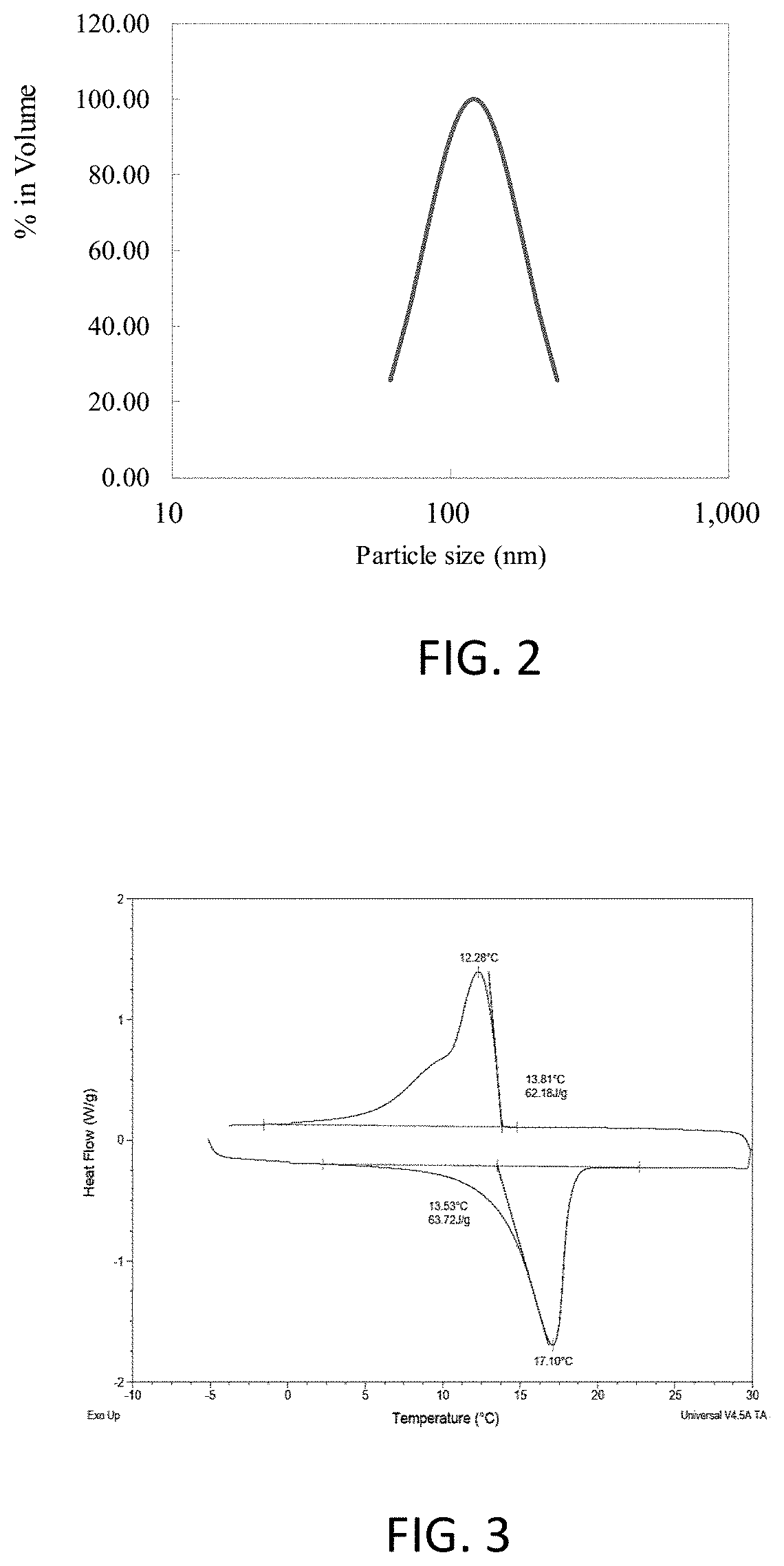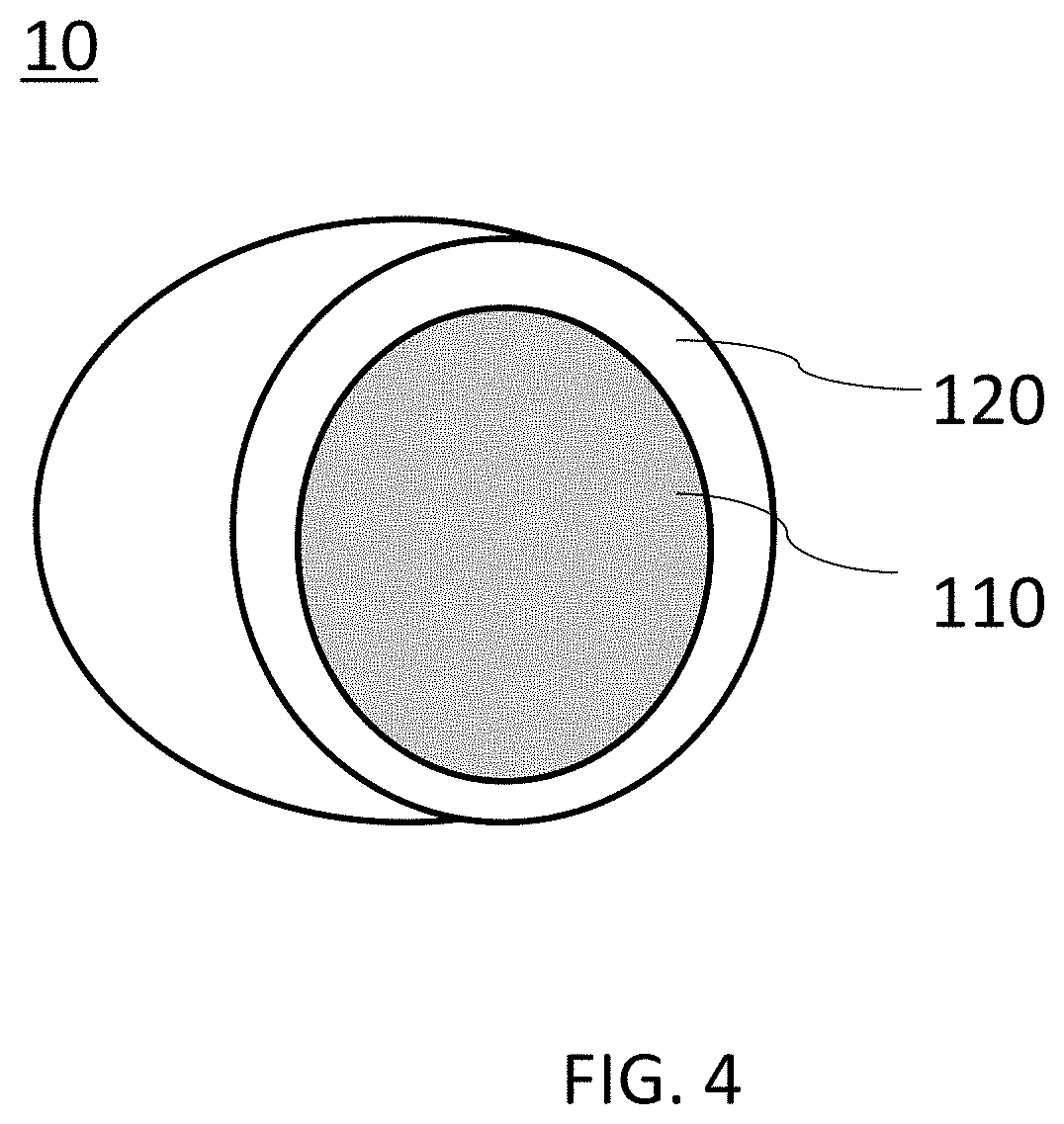Burst-resistant, dispersible nano-encapsulated phase-change material and methods for preparing the same
- Summary
- Abstract
- Description
- Claims
- Application Information
AI Technical Summary
Benefits of technology
Problems solved by technology
Method used
Image
Examples
example 1
[0061]Table 1 shows the composition of a burst-resistant, dispersible nano-encapsulated phase-change material in accordance with an embodiment of the present invention. In Table 1, PCM refers to phase change core material. In this embodiment, C14-20 alkane is used as the PCM. The remaining reaction ingredients include non-phase change materials, which will form the base of the shell 120 as shown in FIG. 4. The non-phase change materials in this embodiment include Tween 80 and Span 80 as surfactant, methyl methacrylate (MMA) and styrene as monomers, allyl methacrylate as crosslinker, and AIBN as initiator.
TABLE 1ChemicalWeightPercentagePCMC14-20 alkane 10 g28.5%SurfactantsTween 80 6 g31.3%Span 80 5 gMonomersMethyl methacrylate 6 g40.2%(MMA)Styrene 6 gCrosslinkerAllyl methacrylate 2 gInitiatorAIBN0.1 g(azodiisobutyronitrile)
example 2
[0062]Table 2 shows another composition of a burst-resistant, dispersible nano-encapsulated phase-change material in accordance with an embodiment of the present invention. In Table 2, PCM refers to phase change core material. In this embodiment, eicosane is used as the PCM with methacrylic acid and styrene as monomers. The remaining reaction ingredients are the same as in Example 1. However, the weight of the ingredients differs from Example 1.
TABLE 2ChemicalWeightPercentagePCMEicosane (36-38o C.) 14 g27.5%SurfactantsTween 806.5 g24.6%Span 80 6 gMonomersMethacrylic acid 11 g47.9%Styrene 11 gCrosslinkerAllyl methacrylate 2 gInitiatorAIBN0.4 g(azodiisobutyronitrile)
[0063]The difference between Example 1 and Example 2 is the type of PCM and monomers. By employing different types of PCM and shells, a higher or lower working temperature may be achieved when the burst-resistant, dispersible nano-encapsulated phase-change material is used in different applications.
[0064]Fabrication of t...
example 3
[0066]Fabrication of Burst-Resistant, Dispersible Nano-Encapsulated Phase-Change Material / Waterborne PU Latex Mixture
[0067]The burst-resistant, dispersible nano-encapsulated phase-change material and PU latex are mixed together. The solid ratio of PU and the burst-resistant, dispersible nano-encapsulated phase-change material is controlled at a ratio between 1:5 and 1:15. Next, the mixture is treated by ultra-sonication for 30 minutes with ice bath. The resulting mixture is then coated on a fabric.
[0068]Referring to Table 3, when the solid ratio of PU and burst-resistant, dispersible nano-encapsulated phase-change material is at 1:5, the heat fusion of the final product is 23.15 J / g. When the solid ratio of PU and burst-resistant, dispersible nano-encapsulated phase-change material is at 1:15, the heat fusion of the final product is 30.16 J / g.
TABLE 3Solid ratio ofPU and nanoPCM inContent in final productsHeat of fusionmixtureFabricPUNano-PCM(J / g)1:555.09%7.48%37.42%23.151:1554.76%2....
PUM
| Property | Measurement | Unit |
|---|---|---|
| particle size | aaaaa | aaaaa |
| particle size | aaaaa | aaaaa |
| temperature | aaaaa | aaaaa |
Abstract
Description
Claims
Application Information
 Login to View More
Login to View More - R&D
- Intellectual Property
- Life Sciences
- Materials
- Tech Scout
- Unparalleled Data Quality
- Higher Quality Content
- 60% Fewer Hallucinations
Browse by: Latest US Patents, China's latest patents, Technical Efficacy Thesaurus, Application Domain, Technology Topic, Popular Technical Reports.
© 2025 PatSnap. All rights reserved.Legal|Privacy policy|Modern Slavery Act Transparency Statement|Sitemap|About US| Contact US: help@patsnap.com



